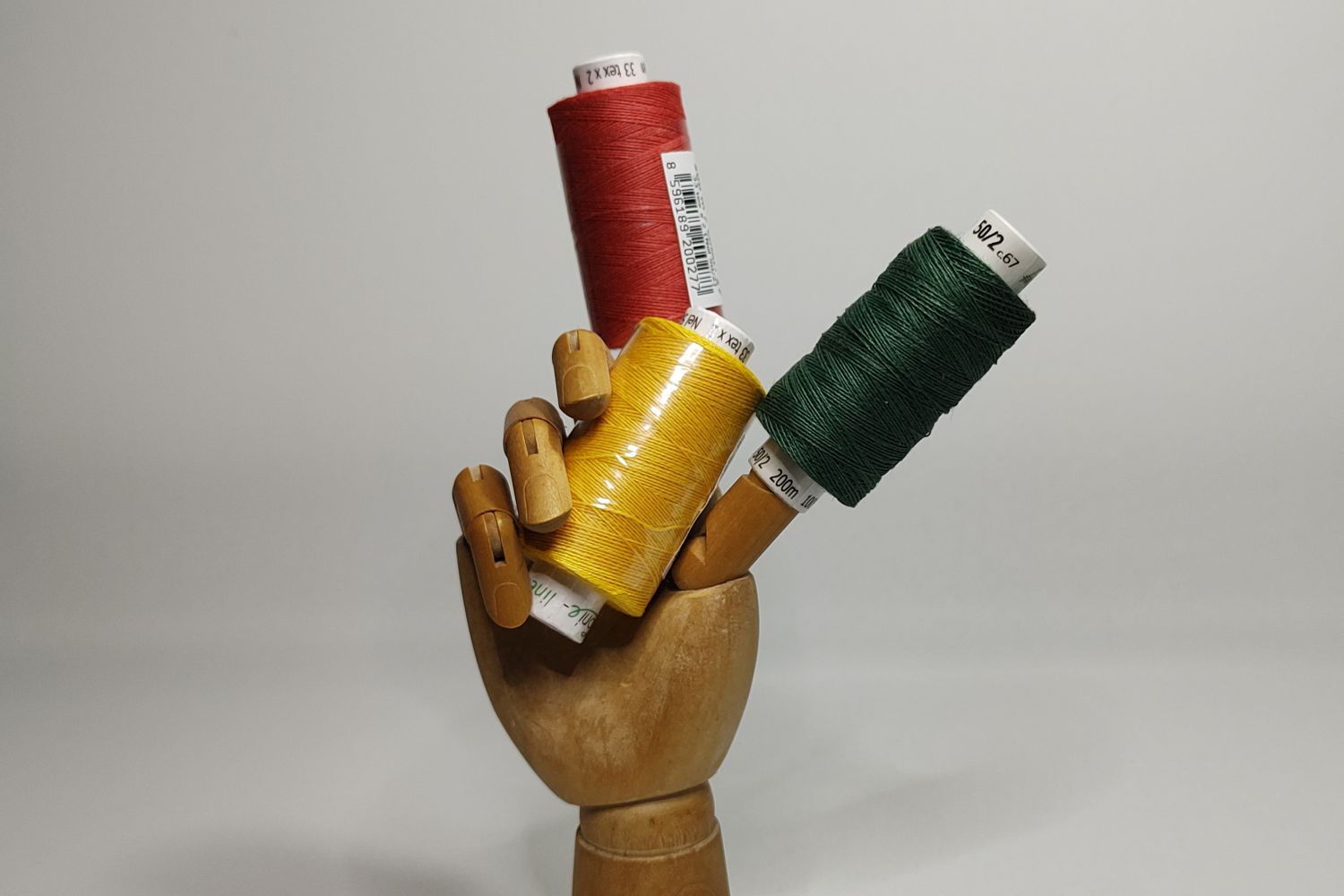Výber vhodnej nite na paličkovanie
Výber vhodnej nite na paličkovanie
Keď som pred 30 rokmi začínala paličkovať, používali sme perlovku, snehurku a kordonety. Mnohokrát šlo o archívne nite po „babičke“. Často sa trhali, púšťali farbu a jednotlivé pradená sa rozchádzali. V Prahe mali špeciálne nite na paličkovanie. Boli farebné, mali rôzne hrúbky, štruktúru a zloženie. Práca s nimi bola neporovnateľne lepšia. Teraz ich viete zohnať napríklad na čipkárskych festivaloch.
Ako sa však vyznať v rôznych názvoch a číslach? Ako budete vedieť, že niť, za ktorú ste dali niekoľko euro je naozaj vhodná na to, na čo ju chcete použiť?
Materiál
Používame prevažne prírodné priadze: ľan, bavlnu, konope, vlnu, hodváb ...
Bavlna je hladká a vydrží aj vysoké teploty pri žehlení, dobre sa tuží rôznymi tužidlami. Nie všetky nite a priadze sú stálofarebné, problematické sú hlavne odtiene červenej a fialovej.
Bavlnené nite sú v rôznych hrúbkach. Hrúbka nite sa udáva ako tex alebo Nm. TEX udáva váhu nite (gramy na kilometre, alebo miligramy na metre). Čím vyššie je TEX nite, tým je niť silnejšia. Ak na niti Tex nie je uvedené, vždy tam je dĺžka návinu a váha a tak si to viete vypočítať. Pri nitiach na paličkovanie sa používa aj obchodné číslovanie 0, 30, 50... Čím je toto číslo vyššie, tým je niť jemnejšia. 0 je teda najhrubšia, 8 je ako perlovka. Hrúbky 0 sa používajú ako opletačky, 8- 30 na mnohopárovú torchon čipku, 50 a viac na tylové čipky. Na pásikovú voľte hrúbku podľa šírky pásika, ktorý chcete urobiť. Najčastejšie 8-30. Z tenších nití je už pásik veľmi prácny.
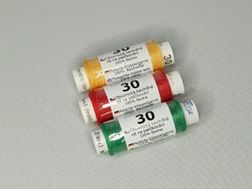
Bavlnené nite poznáme ako obuvnícke (ON) a mercerované (MA). Obuvnícke sú pevnejšie, majú nižší lesk. Použite ich na paličkované obrazy, malé dekorácie, šperky a na mnohopárovú čipku.
Lepšie sa s nimi pracuje. Sú vhodné na paličkované obrazy, malé dekorácie, na mnohopárovú čipku, ale hlavne pásikovú čipku. Vyžijete ich hlavne tam, kde potrebujete vytvoriť pocit plnosti čipky.
Aj mulinky a perlovky sú bavlnené. Mulinku môžete aj rozdeliť na jednotlivé vlákna a paličkovať nimi. Celé pradeno sa používa ako opletačka.
Na obrázky a malé dekorácie vyberajte nite okolo veľkosti 30. Skúste použiť aj nite v jednej farbe, ale rôznych hrúbkach.
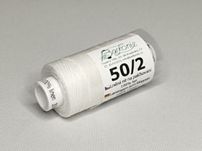
Ľan je viac štruktúrovaný, nite nie sú celkom hladké. Odtiene sú viac tlmené a prírodné. Je dostupný aj v leštenej úprave, známy ako gombíková niť (42 tex 3 (NeL 39,7/3, Nm 24/3).
Ľanové nite sú vhodné na paličkované obrazy, malé dekorácie, na mnohopárovú čipku, pásikovú čipku. Štruktúra sa dá využiť aj v odevnej čipke.
Ľan je 50/2 je podobný bavlne 30, 50/4 perlovke. Nite a priadze z ľanu sú dostupné aj v hrubších verziách, sú vhodné skôr na odevnú čipku.
Konope sa ťažšie zháňa, farebnosť je obmedzená, ide prevažne o hrubšie nite. Používali sa prevažne na pásikovú čipku.
Vlna je hrubšia, môže mať rôzne odtiene a štruktúru. V mnohopárovej čipke sa používa ako opletačka, prípadne sa s ňou paličkujú odevné súčasti. Paličkovať sa dá aj plstenými niťami.
Hodváb je väčšinou tenší, lesklý. Práca s ním je náročnejšia, je klzký. Je nutné dodržať maximálnu teplotu žehlenia a iné inštrukcie pre údržbu čipky z takejto nite. Hodí sa na malé dekorácie, šperky, dotvorenie pásikovej čipky a široké využitie má v odevnej čipke.
V poslednom čase sa používajú aj umelé vlákna, prípadne zmesové nite.
Nite Andrea sú kombináciou 100 % egyptskej dlhovláknej bavlny a metalického polyesterového prúžku, ktorý dodáva niti lesk. Sú v troch hrúbkach : Andrea 10, 12 a tenká 55. Sila nití je porovnateľná z bavlnou s daným číslom.
Metalické nite
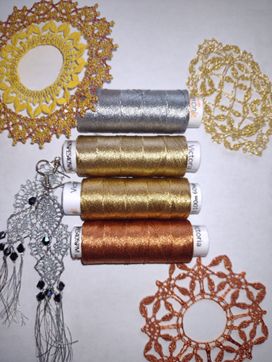
Victoria
Nite Victoria sú náhradou za nite REXANA. Veľmi dobre sa s ňou
paličkuje, je poddajná a pekne drží tvar. Dá sa s ňou aj vyšívať a je
vhodná aj na strojové výšivky. Hrúbka je medzi 12 -15. Má 4 farby:
Strieborná, zlatá svetlá a zlatá tmavá, medená). Ak ju dáte 2x je z nej
pekná opletačka.
DMC Diamont je podobný Victorii.
Karolina
Náhrada za REXETA a TILEKO, má niekoľko jemností. Univerzálna je
Karolina 1, ktorá sa skladá z 1 pramienka (Karolina 2 ich má 2, 3 tri, 5
päť). Dá sa použiť samostatne alebo v kombinácii s bavlnou ( napríklad
bavlna 50- 60). Na paličkovanie sú hrúbky 3 a 5 veľmi tvrdé, dajú sa
použiť iba ako vkladaná niť. Vyrábajú ju v 29 odtieňoch.
Elisabeth
Je vizuálne podobná drôtu. Siahnite po nej, keď chcete robiť repliku
kovovej čipky. Má 3 hrúbky (1,2,3) a je len v 2 farbách - zlatá a
strieborná. Elisabeth 1 je náhradou za Titolo. Najhrubšia Elisabeth je
náhradou za Titano a je hrubá asi ako perlovka. Hodí sa len ako
opletačka, alebo na spevnenie čipky namiesto drôtu.
Umelý hodváb (hodvábny kordonet) sa používa ako náhrada hodvábu. Práca s ním nie je jednoduchá a preto sa využíva hlavne ako vložená niť, prípadne na dozdobenie čipky lístkovinou.
Hrubšie priadze (napr. zn. Anchor, YarnArt) sú aktuálne obľubené ako opletačky.
Gympa, drôt a iné materiály
Paličkovať sa dá aj drôtom, papierovým pásikom, lykom, kožou ....
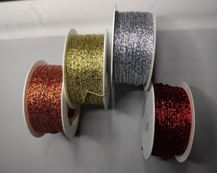
Pokiaľ používate drôt počítajte tým, že bude časom podliehať korózii. Čo najmenej sa ho dotýkajte, používajte špeciálne paličky na drôt a hotový výrobok netužte.
Gympa je drôt potiahnutý umelým hodvábom alebo metalickým pásikom. Nepodlieha tak rýchlo korózii. Používa sa do okrajov čipky na spevnenie, alebo ako vložená niť.
V moderných čipkách nájde uplatnenie aj papierový motúz, lyko, slama, perie a koráliky.

